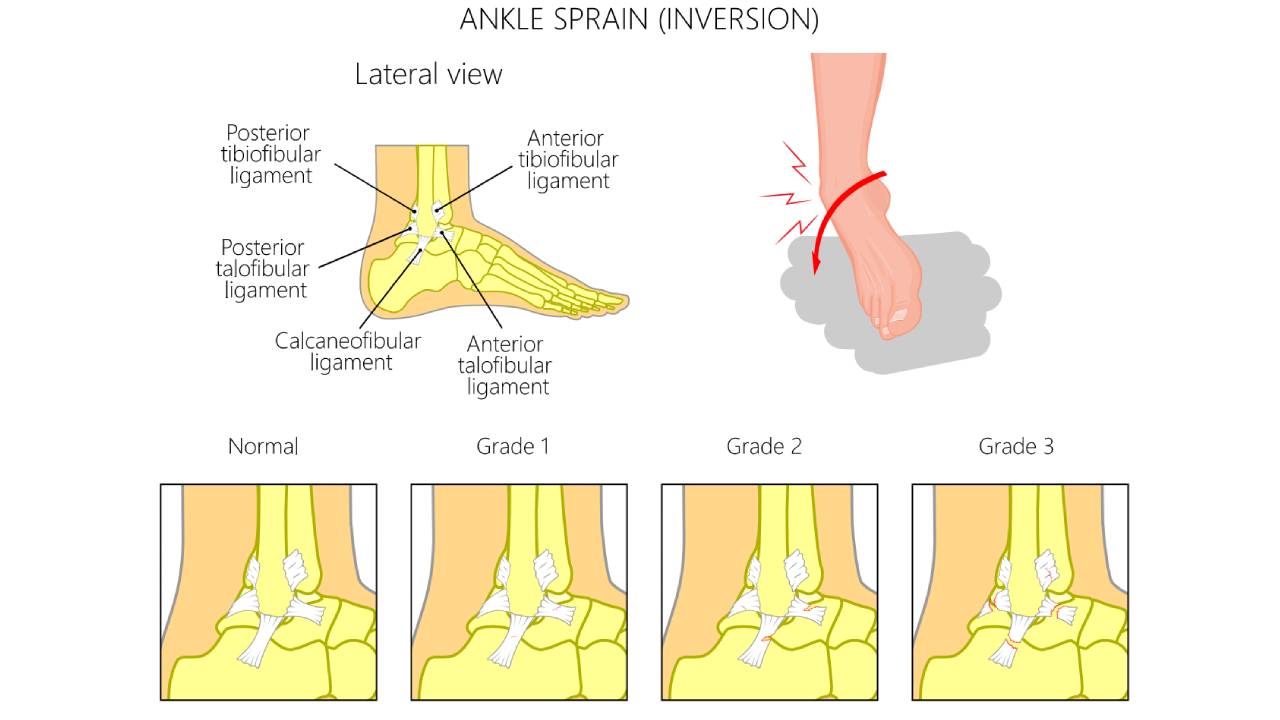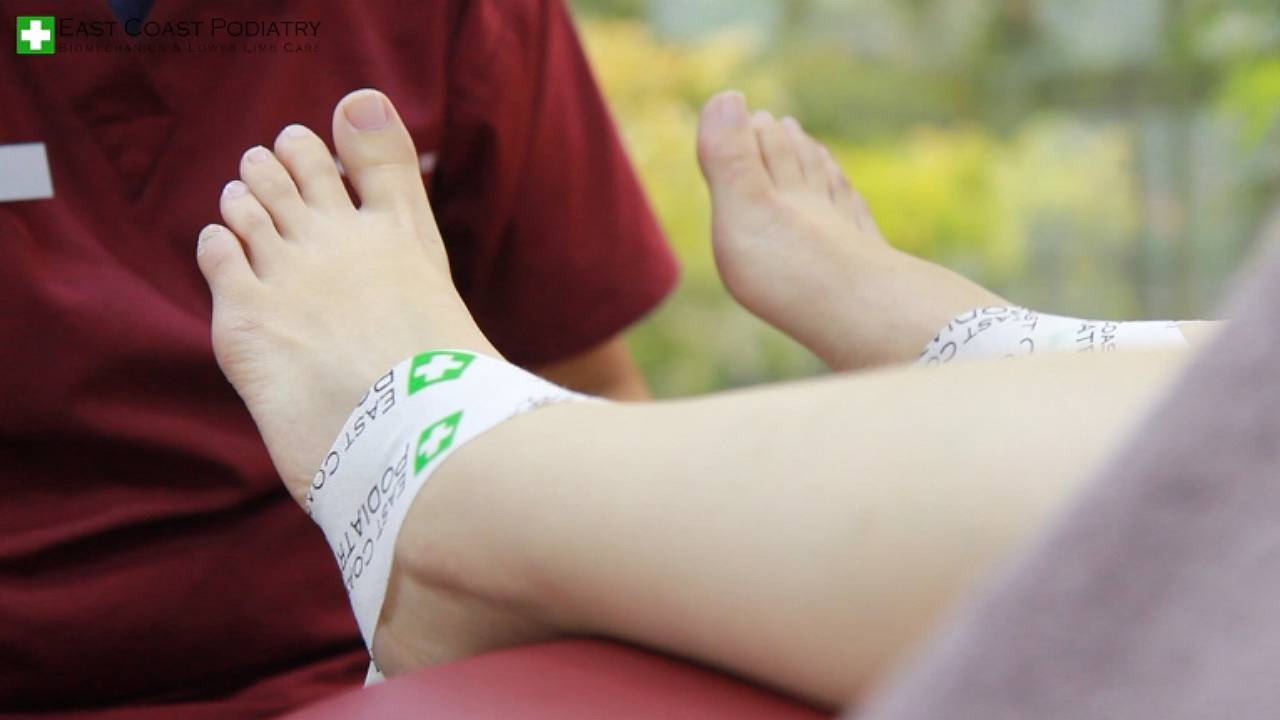
Sprains and strains are hard to differentiate, and the term is often used interchangeably when soft tissues in and around a joint have been overstretched or torn. However, they are not the same even though they have many similarities. A sprain refers to overstretched, or commonly, torn ligaments (connecting bone to bone), while a strain occurs in the muscles or tendons (connecting bone to muscle) due to overuse or trauma.
Symptoms
A sprain and strain are difficult to set apart, given their similar symptoms:
- Pain
- Swelling
- Reduced range of motion around the affected joint
However, several differences can be used to identify if you have suffered a sprain or a strain, such as:
| Ankle Sprain |
|---|
|
| Ankle Strain |
|---|
|
How Are Ankle Sprains and Strains Diagnosed?
Diagnosing an ankle sprain or strain involves a detailed clinical examination, collecting a full history of the injury, and diagnostic imaging of the injured site if required. Once the nature and severity of the injury have been determined, your podiatrist will be able to develop and implement the appropriate management protocol.
Severity Grading of Ankle Sprains and Strains

The severity of sprains and strains can be broken down into a four-step grading system:
Grade 0 (no injury present)
The ligaments or muscles/tendons are slightly overstretched, usually due to a minor twisting of the ankle joint. There is no injury or pain.
Grade 1 (Mild)
The injury is due to overstretching, resulting in mild tearing of the ligaments or muscles/tendons. Individuals may notice slight pain, swelling, and bruising around the injured site, but are still able to walk/stand.
Grade 2 (Moderate)
There is moderate tearing of the ligaments or muscles/tendons. Some tissues are completely torn but tissue integrity is still retained. Swelling, bruising, and tenderness at the injured site are more noticeable. Individuals may experience a reduced range of motion, ankle instability, and difficulty during weight-bearing.
Grade 3 (Severe)
Impaired tissue integrity has occurred due to a complete tear or rupture of the ligaments or muscles/tendons, with no fibres intact. Symptoms (mentioned in Grade 1 and 2) are severe. There is significant bruising (bluish/purplish-black) around the affected area, along with little to no range of motion, and weight cannot be applied to the ankle or foot.
Ankle Sprain and Strain management
While mild ankle sprains and strains can be managed similarly, severe cases warrant a more distinctive approach.
For mild to moderate sprains and strains, the R.I.C.E. (Rest, Ice, Compression, Elevation) method can be used alongside non-steroidal anti-inflammatory drugs (NSAIDs) to reduce pain and swelling at the injured site.

For severe ankle sprains, casting, crutches, or a walkable cast-brace device may be required. These types of sprains often need to be immobilised and offloaded, and should always be investigated for fractures. For severe ankle strains, sports taping or a brace is often used to support the weakened muscles.
Depending on the type and severity of injury sustained, your podiatrist may use advanced technologies such as EMTT or SIS to facilitate tissue regeneration and healing, and a full recovery can take several months.




